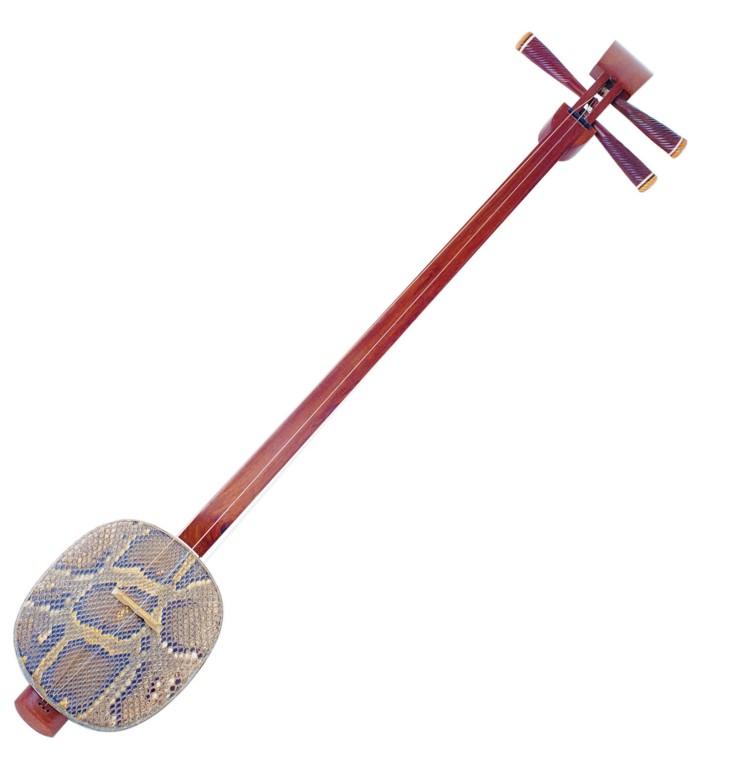three-stringed piano overview

The sanxian has three strings in total, hence the name "Sanxian". Chinese traditional plucked instruments were also introduced to Ryukyu, Japan and other places. It is used as the main instrument in Kunqu Opera, Huaihai Opera, Daxianzi Opera and other operas as well as in single-string, big drum, Sanxianshu and other operas, and is also used in the "Three Great Pieces" of Peking Opera, the "Eight Great Pieces" of Jiangnan Sizhu, and the "Five Great Pieces" of Guangdong Music. The frame head", the upper four pipes of the south pipe.
Because of its unique timbre, it has an important position in the national orchestra. There are a large number of ensembles transplanted from opera accompaniment music and guqin music, but there is a lack of solo pieces specially designed to play the characteristics of sanxian
The origin of Sanxian is still uncertain. It is said that it originated from the Xiantuo in the Qin and Han Dynasties. The name of "Sanxian" was first seen in "Jiaofang Ji" by Cui Lingqin of the Tang Dynasty, but the shape of "Sanxian" was not described in detail in the text.
Sanxian prospered in the Yuan Dynasty and was one of the main accompaniment instruments for Yuan music. Yang Shen in the Ming Dynasty believed that "this time the sanxian started in the Yuan Dynasty", while Mao Qiling in the Qing Dynasty believed that "the sanxian originated in the Qin Dynasty, and the system of the thirty drums and drums was originally the 30th drum and drum. However, it is easy to sound when it is changed in shape, and it is called drum and drum. During the Tang Dynasty, music people were often used to it, and the world thought that Hu music was not good.”
With the unearthed stone carvings of music from the Southern Song Dynasty tomb in Guangyuan, Sichuan, and figurines of sanxian music from the Jin tomb in Jiaozuo, Henan, it can be seen that the sanxian appeared earlier than the Yuan Dynasty.
The sanxian popular in northern China is called big sanxian, big drum sanxian, and Jing sanxian, generally 122 cm long, while the sanxian popular in southern China is called small sanxian, quxian, south sanxian, and south chord, generally 95 cm long.
In the 1920s, the addition of the sanxian appeared, but it was not popular. At the end of the 2000s, Wang Zhenxian improved the plus-string sanxian and wrote related articles.
From Fujian to Ryukyu, it evolved into three lines, and in Japan it became shamisen.
- Pinyin:sān xián qín
- Types of:plucked instruments
- foreign name:Sanxian
overview of other similar instruments
- sanyanxiao overview
- Daguangxian overview
- Leiqin overview
- hahao overview
- yandundagu overview
- Han Xiaozheng overview
- Fang Xiang overview
- guanzi overview
- zhuqin (Dao Qin) overview
- zhuiqin overview
- bangzi overview
- three-stringed piano overview
- Gehu overview
- xiao overview
- xiaokonghou overview
- Konghou overview
- Sheng overview
- suona overview
- hulusi overview
- gushao overview
 渝公网安备 50010702504639号
渝公网安备 50010702504639号